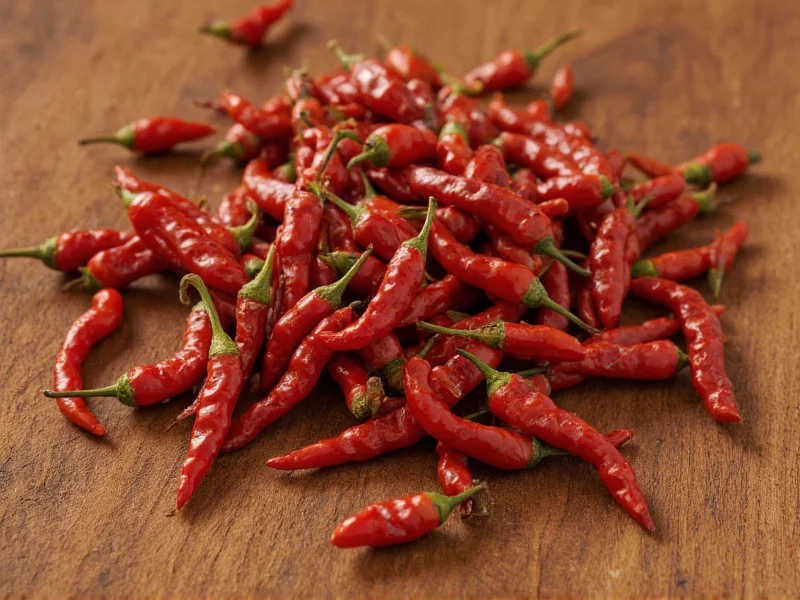Understanding the precise heat level of chipotle peppers helps home cooks and professional chefs alike create balanced dishes with just the right amount of spice. While the Scoville scale provides a standardized measurement, actual heat can vary based on growing conditions, specific pepper variety, and preparation methods.
What Exactly Are Chipotle Peppers?
Chipotle peppers aren't a distinct pepper variety but rather jalapeños that have undergone a specific preparation process. The term "chipotle" comes from the Nahuatl words "chil" (chili) and "poctli" (smoked). These peppers start as fully ripe red jalapeños that are smoke-dried until they reach the perfect balance of moisture content and flavor development.
The smoking process, traditionally done over wood fires, imparts that characteristic deep, smoky flavor while preserving the pepper's essential qualities. This transformation doesn't significantly alter the heat level compared to fresh jalapeños, which also range from 2,500-8,000 SHU, but it does concentrate flavors and change the culinary applications.
Chipotle Pepper Heat Compared to Other Common Peppers
| Pepper Type | Scoville Heat Units (SHU) | Heat Level |
|---|---|---|
| Bell Pepper | 0 SHU | Mild |
| Chipotle Pepper | 2,500-8,000 SHU | Medium |
| Guajillo Pepper | 2,500-5,000 SHU | Mild-Medium |
| Serrano Pepper | 10,000-23,000 SHU | Medium-Hot |
| Habanero Pepper | 100,000-350,000 SHU | Very Hot |
Factors That Influence Chipotle Pepper Heat
Several variables affect the actual heat level you'll experience when using chipotle peppers:
- Growing conditions: Soil quality, climate, and water stress can cause significant variation in capsaicin production
- Ripeness at harvest: Fully red jalapeños used for chipotles tend to be hotter than green ones
- Smoking duration: Longer smoking can sometimes concentrate heat slightly
- Individual pepper variation: Even within the same batch, heat can differ noticeably
- Preparation method: Removing seeds and membranes reduces heat significantly
Practical Applications in Cooking
Chefs value chipotle peppers for their complex flavor profile that combines heat with smokiness. When incorporating them into recipes, consider these practical tips:
Reconstitute dried chipotles by soaking in hot water for 20-30 minutes before use. The resulting liquid adds depth to sauces and marinades. For canned chipotles in adobo sauce, remember that the sauce itself contains additional ingredients that affect both flavor and heat perception.
When substituting chipotle peppers for fresh jalapeños, use approximately one dried chipotle for every 2-3 fresh jalapeños, adjusting to taste. The smoky dimension they provide works exceptionally well in barbecue sauces, stews, and rubs for meats.
Safety Considerations When Handling Chipotle Peppers
Even at medium heat levels, chipotle peppers contain capsaicin that can cause skin and eye irritation. Always wear gloves when handling dried chipotles or working with concentrated forms like chipotle powder. Avoid touching your face during preparation, and wash hands thoroughly with soap afterward.
If you accidentally get capsaicin on your skin, wash with soap and water rather than rubbing alcohol, which can spread the oil. For eye exposure, flush with cool water for several minutes. Dairy products like milk or yogurt can help neutralize the burn if consumed after eating overly spicy food.
Common Misconceptions About Chipotle Heat
Several myths persist about chipotle pepper heat levels. Many believe the smoking process significantly increases heat, but in reality, it primarily affects flavor while maintaining similar Scoville ratings to fresh jalapeños.
Another misconception is that all chipotle peppers have uniform heat. Like all chili peppers, they exhibit natural variation. Some batches may lean toward the milder end (2,500 SHU), while others approach the hotter threshold (8,000 SHU).
Understanding these nuances helps cooks better anticipate and control the heat level in their dishes, making chipotle peppers a versatile ingredient rather than an unpredictable spice bomb.
Frequently Asked Questions
Are chipotle peppers hotter than jalapeños?
Chipotle peppers and fresh jalapeños have nearly identical heat ranges (2,500-8,000 SHU) since chipotles are simply smoked jalapeños. The smoking process doesn't significantly increase the heat level, though some people perceive the concentrated flavor as hotter.
How can I reduce the heat of chipotle peppers in cooking?
To reduce chipotle pepper heat, remove the seeds and inner membranes where most capsaicin concentrates. Soaking reconstituted chipotles in milk rather than water can also help neutralize some heat. Start with less than your recipe calls for and gradually add more to achieve your desired spice level.
What's the difference between chipotle powder and ground chipotle peppers?
Chipotle powder is made exclusively from ground dried chipotle peppers, while some "smoked paprika" or other products may be mislabeled as chipotle powder. True chipotle powder should have a deep reddish-brown color and intense smoky aroma, with heat levels consistent with the 2,500-8,000 SHU range.
Can I substitute chipotle peppers for other smoked peppers?
Chipotle peppers can substitute for other smoked peppers like smoked paprika or morita peppers, but with flavor differences. Morita peppers (a type of chipotle) are typically fruitier and slightly milder. For recipes requiring smokiness without significant heat, smoked paprika makes a better substitute as it ranges from 100-500 SHU.











 浙公网安备
33010002000092号
浙公网安备
33010002000092号 浙B2-20120091-4
浙B2-20120091-4